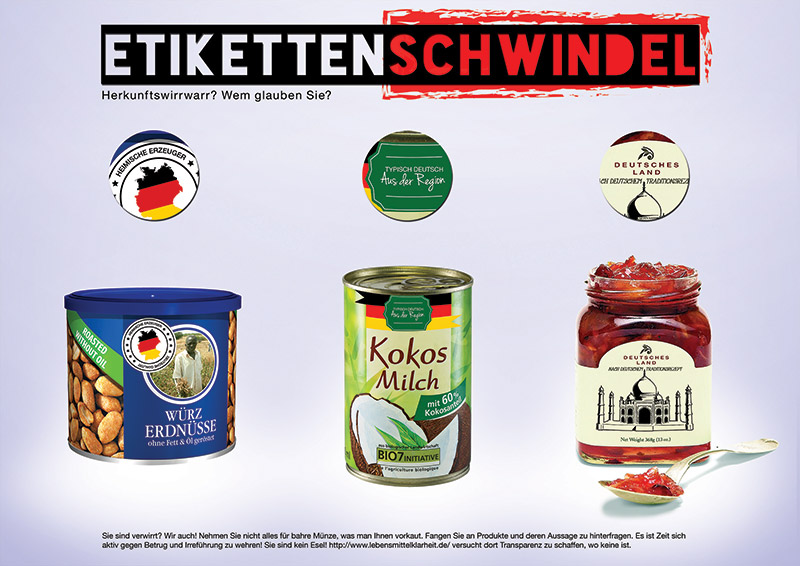Type: University
Semester: 2
Skills: Campaign, PS</p>Year: 2013
Problem:
Bio isn’t always Bio. Regional isn’t always regional. Bio isn’t regional. Regional isn’t Bio. Fairtrade isn’t always Fairtrade. Fairtrade isn’t regional. Regional not Fairtrade. Fairtrade not Bio. Bio not Fairtrade. “local production” not local. “German Quality” not German. Germany is sometimes India. A Thai village is sometimes declared as a German city.
Which color had Napoleon the white? White. How old is the 90 years old granny? 90. But where does the "German plums" come from? Thailand! The plums are produced in Thailand but as they are boxed in Germany they can be declared as a local product. A typical food industry cheat. Outrageous!
Aim:
To untangle confusion, to raise awareness and to train the observers view. Too much is just accepted indifferently or not even questioned. Products labeled as “regional” can be sold at a three times higher price than regular products. People buy it. They believe it just because it’s written somewhere. Therefore, more and more producers try to advertise they products as regional/local. Some suggest it with a sneaky company name like “deutsches Land”, “Berlin farm”, “Grannys shop” or similar.
Hence, I’ve chosen to create products with such obvious lies that it hurts. Like the regional peanuts for example. Regional Peanuts? In Germany? How is that even possible? Because peanuts are produced in India, China, USA, Nigeria, Argentina, Sudan, Senegal and Brazil. Not in Deutschland – since peanuts do not grow there! But they are still sold in some stores (like REWE) as “regional”. Something is wrong here! Terms like “local producers”, “German quality”, “typical German”, “regional“, “traditional German recipe” are used very vaguely.
Examples:
Investigation:
I could find diverse websites: An article from newspaper “Die Zeit”, which tries to find the origin of a Pizzas components. An article from newspaper "Süddeutschen" questioning the origin of a yogurt. I wasn’t able to find (2014) many other official websites. But I could find private websites where consumer complain that it is impossible for people to find out where the products really come from. It is only declared on few products with a control number for all ingredients. This control number informs about the place of production (not only the head office address). Such a control number would be great if it is a mandatory thing on all products.
A great step forward is this consumer advice website. It’s an initiative of the federal government for nutrition and agriculture. The page lists all dubious products, inform and give the possibility to report products. The complains are taken seriously and sometimes lead to corrections by the producers.
This is where I found the right products for my false labeling campaign. In store I noticed that many producer choose sneaky company names to confuse the consumer. Like Bayerntaler, Biotrend, Lokalpatriot, Nordseekutter, Sylter Hof etc. This way they can legally suggest local or bio products without the product being local or bio. Which should be a fraud. Then, you have the products produced locally but shipped far away to be packed and then, shipped back again to be sold. Is this still local? What do you think?
To raise awareness on all those frauds I created this false labeling campaign:










Comments